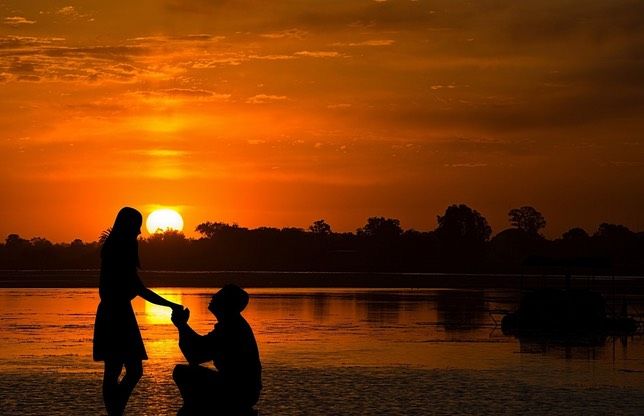Since ancient times, the wedding ring was perceived as a sign of loyalty, translated into different objects. In that times, they offered the keys of chests, small key rings from cane or later from bronze. This gift were designed to obtain the consensus of devotion of those two for marriage.
The wedding ring is placed on the fouth finger of the left hand because, since the days of ancinet Egypt, people belived that a vein from the ring finger goes straight to the heart. The idea came later in ancient Greece and the Roman Empire and has been preserved until today.
Engagement rings were offered in ancient times, but were considered only some gifts without any attempt loyalty. They were metal rings inscribed with fragments of text or poems and called poetry rings.
The significance of ring’s shape and likeness with moon and sun represents perfection and everlasting love. In some parts of the world, women got a thimble instead engagement ring to be able to sew dowry.
Rings began to be made of gold after the Second World War. In parallel, diamond engagement ring was first offered by Duke Maximilian of Austria to his wife Mary of Burgundy in 1477. This act has generated enormous interest for diamond engagement rings, and they began to be often made and offered.
In time, the significance of the place where to put the ring have been multiplied, the most interesting explanation coming from the Chinese people. They assigns a finger to each member of the family. Thus, the thumb was assigned to parents, forefinger to brothers and sisters and middle finger to yourself. Therefore, the ring finger was associated with the life partner, and, logically, the little finger to children.
Traditions associated with the provision of the engagement ring
The first wedding invitation was written by monks who addressed exclusively nobility (1600). If invitations were numerous, they gave them to be engraved. The first dress was worn by Queen Victoria of Great Britain in 1840. The custom was prevalent and respected nowadays. White veil was originally intended to defend the bride from spells and also represent its purity. The significance of honeymoon started in Scandinavia and supposed that one months after marriage, the bride and the groom will go away from home and consume lots of honey, which effect is aphrodisiac.

